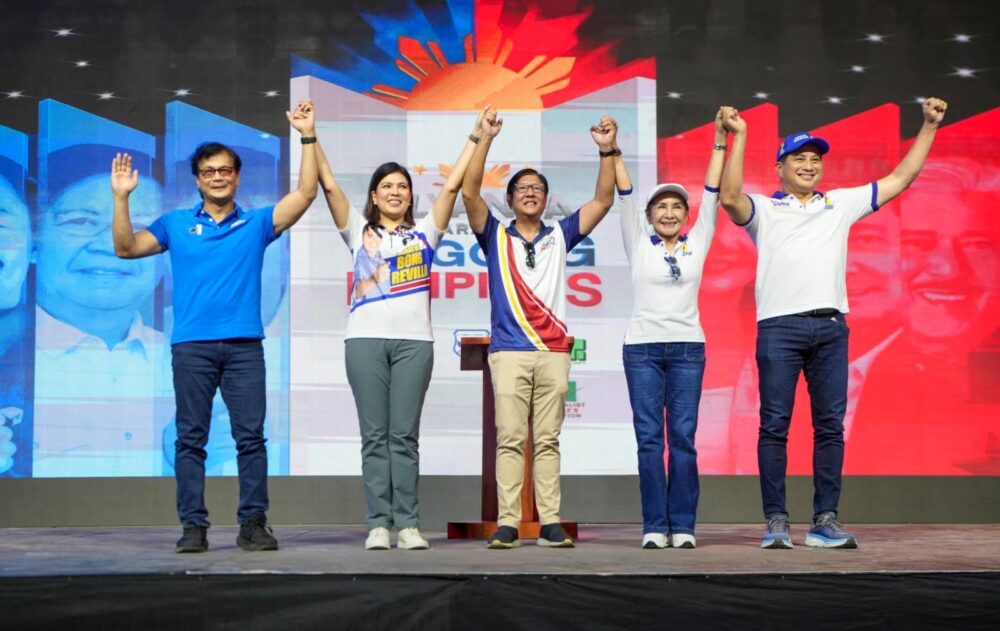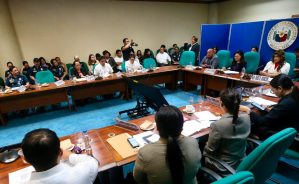Defying expectations and previous patterns, in the midterm elections held on 12 May the Filipino electorate generated neither dominance to any single political bloc nor a clear two-way split between administration and opposition candidates.
Rather, in the context of an increasingly unpopular president opposed by a popular and vitriolic vice-president, the recently concluded 2025 senatorial elections yielded a surprising result, making the road to the 2028 presidential elections less and less predictable. As it stands, Filipino national politics is now a three-way fight between the incumbent Marcos administration, a resilient Duterte camp, and the traditional liberal opposition.
The volatility of such an arrangement is emphasised, not only by the future of the Marcos administration’s legislative agenda but also by the looming impeachment trial of vice president Sara Duterte—a great shadow hanging over the next general elections.
If sovereignty is about constituting the state, then it appears that the sovereign Filipino people just created a complicated battlefield that those just elected must struggle to navigate through if they want their careers to survive by 2028 and beyond.
What would account for such a result?
Specifically, from a psycho-political perspective, what does it suggest about the workings of the Filipino political psyche?
Furthermore, assuming that voters mix and matched senatorial candidates—which is unsurprising since the Philippines is bereft of a strong-party system and mentality—what prompted them to prefer such combinations in favor of a new pattern of three-way competition amid old political names?
Conservatively mixing and matching candidates
Let us start with the possibility that voter preferences might have been affected by a habit of political flexibility. Back in the 2022 presidential election, the votes cast for then vice president Leni Robredo exceeded those cast for most members of her own senatorial slate. This suggests that while support for one candidate is not easily transferable to others in the same camp, such is aggravated by an apparent capacity to mix and match candidates. Consequently, voters can end up supporting individual candidates for the sake of their own value systems and priorities, with little regard to associated senatorial slates and party coalitions.
Nonetheless, this political flexibility remains conservative. This might sound tricky if not downright oxymoronic; however, conservatism is neither mutually exclusive with compromise nor is it a simple obstacle to crafting a middle ground. In relation to political flexibility (e.g. ticket splitting), we can define conservatism in two ways. On one hand, it is an aversion to anyone deemed as a political neophyte of sorts tied with a preference for those deemed as already “tried and tested.” On the other, it refers to persistent support for those bearing political values gravitating around tradition, order, and discipline.
Thus, the victors were re-elected senators, dynasts, and/or carrying established reputations before the 2025 elections. Furthermore, the electoral victories of former police chiefs Panfilo Lacson and Ronald dela Rosa, the “crime-buster” media personality Erwin Tulfo, and the social conservative figure of Tito Sotto are manifestations of this lingering conservatism among Filipino voters.
But why did political flexibility take a relatively conservative turn? Why did most voters end up relying on tried and tested names while legitimising those bearers of traditional and disciplinarian values?
A steep drop from a dream to a nightmare
A recent survey showed that 37.9% of Filipinos have deemed politics as “magulo” or disorderly. Furthermore, most citizens see economic insecurity and welfare as the foremost concerns of the land. The 2025 election was thus embedded in a context of political and socio-economic crises, and these certainly weighed on the minds of those who faced the ballot box on 12 May.
But we must also note the possibility that this sense of disorder was not solely due to the intensification of the Marcos–Duterte feud. Rather, it was probable that citizens confronted a long chain of events and maneuverings stretching back to the last year of the Duterte administration that induced a kind of cognitive dissonance.
Ever since Sara Duterte decided to put aside her presidential ambitions—to serve as Marcos’ vice-president in 2022—cognitive dissonance has haunted members of the Duterte camp. Why should they expect her to play second fiddle to someone whom their old chief, Rodrigo Duterte, called a weak leader and a drug addict? As ordinary citizens, Sara’s supporters could only hope that their champion would serve as a co-president of sorts or a high profile cabinet member.
For Marcos supporters, his alignment with the Dutertes might have caused some dissonance in their own camp, especially for those with no fondness for a foul-mouthed leader. Recall that Marcos eventually expressed some level of tolerance for Rodrigo Duterte’s attacks against him, probably to allay doubts ahead of the 2022 elections. In the end, supporters from both sides opted to resolve these cognitive dissonances by rallying behind the UniTeam alliance and their shared hatred of elitist liberals, delivering an unprecedented majority to their chosen ticket.
Surprising evidence in support of the case for gender quotas
30 April, 2025 Gender, dynasticism and representation in the Philippine Congress
Despite this, Sara Duterte enjoyed around 578,000 more votes than her de facto running mate Marcos, indicating that the UniTeam was not as united as it appeared. The millions who carried this alliance to the highest offices of the land were soon forced to watch the promise of unity slip back to the realities of factional disunity and disorder.
One example was the fight over Sara Duterte’s confidential funds. Despite her furious defence based on an appeal to national security, she eventually dropped the proposed funds. Another was the gradual disempowerment of former president and incumbent representative Gloria Arroyo—a long-time ally of both the Dutertes and the Marcoses who helped broker the formation of the UniTeam.
Finally, who would have thought that Leila de Lima, a former senator and leading figure of the liberal opposition during the Duterte administration, would be released from incarceration under a Marcos administration?
With the end of the UniTeam and the release of Leila de Lima, a new round of cognitive dissonance-inducing realignments started. As of now, there are calls for unity among anti-Duterte forces. In addition, the Marcos administration itself recently raised the need for a legitimate opposition to counter obstructionists whose selfish intentions are veiled by an appeal to the public good.
This is certainly the Marcos administration’s swipe against the Duterte camp, which is posing as the new opposition. But it is also the latest of its many flirtations with the old liberal opposition. For one, former vice president Leni Robredo, who remains as a leading figure of the liberal opposition, endorsed two members of the administration’s senatorial slate.
The last three to four years was a long chain of twists and turns that provoked and resolved cognitive dissonances for voters—probably to be provoked again given the spectacle of three-way elite politicking. And if we admit that resolving cognitive dissonance involves doubling down on a decision by devaluing other options, then what vision of politics was re-asserted by those with ticket-splitting ballots?
It appears that in grappling with the ideal of unity in the face of political disorder and socio-economic insecurities, Marcos and Duterte supporters tried to create a senate bound together by a supposed capacity to deliver public goods and/or pursue a disciplinarian and traditional sense of order.
For those who wanted a more pluralistic senate, their ballots suggest that they found the restoration of order and the provision of public goods in a group of tried and tested politicians. It is similar to how we go to an already known repairman to fix a broken pipe. Most of the victors managed to build resonant platforms based on their track records as re-elected and/or long-time public servants. Consequently, voters made “practical” and “low-risk” choices, pissing off progressives vying to be new senators, and tribal devotees demanding ideological purity and voting by slates.
In the end, powerlessness
Along with this recent resolution of dissonance through the 2025 ballot, we must remember that for many Filipinos, shifting alliances and skullduggery are components of an essentially uncontrollable and inaccessible public sphere. Citizens remain both invested in and outside the spectacle of high politics. In other words, they care enough about politics because they know that their lives are inevitably affected by it. But, in the face of the three-way fight that their votes have created, all they can do now is to express their opinions and discontent, mostly through social media and their small conversation circles while waiting for the next elections.
Overall, the Filipino political psyche is a stable system of seemingly contradictory tendencies tied together by a level of political flexibility, serving as means to resolve cognitive dissonances. This has allowed the ordinary Filipino to find meaning and direction in the confusing fluctuations of elite politics.
But in the end, the capacity to resolve cognitive dissonance through conservative political flexibility remains in favor of the status quo. Political dynasties remain rampant in the senate while the two victorious liberal candidates remain outnumbered by their non-liberal and illiberal colleagues.
Thus, despite the fanfare, the 2025 senatorial elections did not offend the oligarchic foundations of Filipino politics. Rather, the electorate simply replaced the political mess they saw with a slate-defying, binary-defying mess of their own design.

